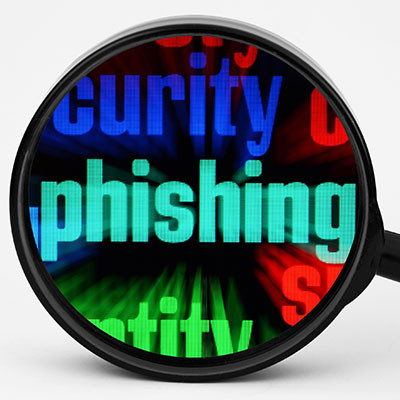- You are here:
-
Blog

-
Washington Works

- Have You Been Targeted By Phishing Attacks? Chances Are You Have
Washington Works Blog
Have You Been Targeted By Phishing Attacks? Chances Are You Have
Phishing attacks can be scary to deal with, especially since it is not unheard of for staff members to not even know they are looking at one. To make sure your staff can identify and respond to phishing attacks in an appropriate way, we’ve put together this short guide to help you along the way.
First, let’s go over what makes a phishing attack.
What is Phishing?
Phishing is one of the most common forms of cyberattacks used by criminals with goals ranging from stealing data to gaining access to an infrastructure. Essentially, a phishing attack is an attempt by a cybercriminal to communicate with your team members in hopes that they will give away important information or allow access to critical systems. Phishing attacks are a natural evolution of cyberattacks that rose in popularity due to the advancement of security standards; while solutions have grown stronger and more difficult to crack, the human mind remains ever-vulnerable.
Phishing emails are the most well-known type of phishing attack, but they also come in other forms, like online forms designed to harvest credentials, SMS messages with infected links, phone calls, and other means of communication. Since phishing attacks can take so many different forms, it’s important that your team knows what to look for in these attempts, as well as how to report them to your trusted IT administrator.
Let’s go over some of the ways your team members can identify a potential phishing attack.
Signs That a Phishing Attack is Targeting You
There are plenty of warning signs you can use to identify a phishing attack. Here is a short list to consider, but if you have any concerns at all, we hope you will reach out to us at 301-571-5040 to learn more about them:
- A tone that doesn’t match the supposed sender
- Misspellings and other discrepancies in key details, like email addresses, domain names, and links
- Out-of-the-blue messages
- Egregious spelling and grammar errors
- Unexpected or out-of-context attachments
- Excessive urgency behind, or open threats as a consequence of, not complying with the message
- Ambiguous messages that motivate the recipient to investigate
- Unusual requests, or requests for explicitly sensitive information
It’s incredibly important to know what these warning signs are so you can actively keep a lookout for them. If you don’t, who knows what could happen?
We’re Here to Help Keep Your Team Safe!
If you feel you could use some help keeping your business safe from phishing attacks, we are happy to help. To learn more, reach out to us at 301-571-5040.
About the author
Washington Works has been serving the Bethesda area since 2005, providing IT Support such as technical helpdesk support, computer support, and consulting to small and medium-sized businesses.
Mobile? Grab this Article!
Tag Cloud

Comments